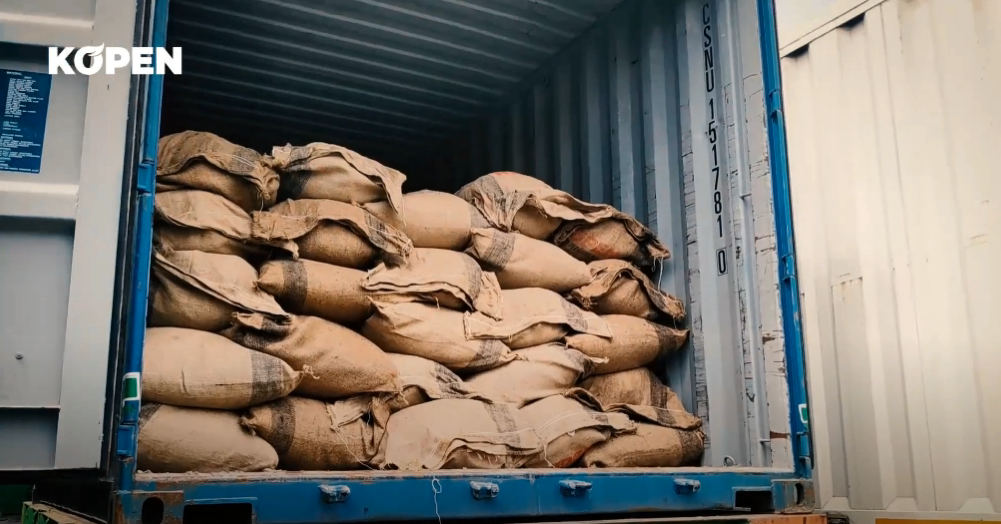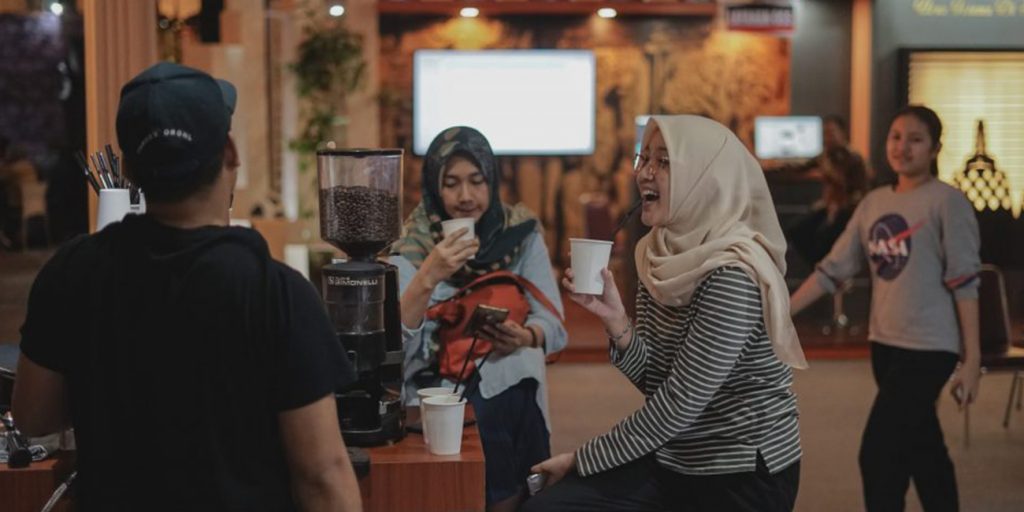Indonesian coffee exporter is one of the biggest in the world. The destination countries for the most coffee exports from Indonesia are America, Egypt, Malaysia, Japan, and Italy. Coffee farming contributes greatly to the country’s socio-economy starting from supporting the livelihoods of small farmers to coffee shops that are widespread in Indonesia.
Types of Coffee Become Indonesian Coffee Exporters
Indonesia can become the 4th largest foreign exchange earner because it exports coffee to several countries. In addition, the country is on a path along the equator, making it suitable for coffee tree development. Here are some types of Indonesian coffee from various regions:
Sumatra area
Many coffee beans produced in Sumatra use the wet-hulled method. Here are some regions of Sumatra and the types of coffee produced:
– Arabica Coffee
Gayo, Sidikalang, Samosir, Simalungun, Lintong, Mandheling, and Kerinci are some of the areas that produce Arabica coffee types. This type of coffee has low acidity, medium body, and a taste that varies from region to region.
– Liberica Coffee
The regions that produce Liberica coffee from Sumatra are the Rangsang Meranti and Tungkal Jambi regions. This type of Liberica coffee has low acidity, strong body, strong aroma and lightly nutty.
– Robusta Coffee
This type of Robusta coffee is produced from the Semendo and Lampung regions with low acidity, strong body, a hint of caramel, and a nutty taste.
Java
The island of Java is home to some of the oldest coffee plantations in the world and has an inspiring story in the coffee specialty. Here are some types of coffee in the Java region:
– Arabica Coffee
This type of Arabica coffee produced from the Java region has medium acidity, medium body, and a variety of tastes. This coffee is mostly produced by the Java Preanger, Ciwidey, Puntang, Sindoro Sumbing, Jampit, and Ijen Raung regions.
– Robusta Coffee
Robusta coffee is mostly produced in the Temanggung area. The resulting Robusta coffee has low acidity, strong body, sweet, tobacco and chocolate.
Kalimantan
The type of coffee in Kalimantan is Liberika. Liberika is found in West Kotawaringin District, Central Kalimantan and Kubu Raya District in West Kalimantan. This coffee only grows in the lowlands, the advantage of this coffee is being able to grow on peat soil.
Even though this coffee grows on peat soil which has acidic levels, this coffee has medium acidity and strong body. This coffee has a hint of jackfruit and vegetables.
Bali & NTT
The islands of Bali and East Nusa Tenggara are also known for their white-sand beaches and wildlife reserves. The island stretches the area also offers some of the best Indonesian coffee. Here are some types of coffee in Bali and East Nusa Tenggara:
– Arabica
The Bali & NTT regions produce Pupuan, Kintamani, Bajawa, and Sokoria Arabica coffees. The Arabica coffee produced has high acidity, low body, and a variety of tastes.
– Robusta
Robusta coffee producers are the Tambora and Wae Rebo regions. This coffee has low acidity and strong body.
Indonesia has many types of coffee beans in each region with unique taste notes. After knowing the types of coffee in Indonesia, then what are the steps to become a coffee exporter?
How to Export Indonesian Coffee?
Indonesian coffee exporters annually produce at least 641,833 tons of coffee. This high number makes people want to know how to export coffee abroad. Here’s how to export coffee abroad:
1. Coffee beans are in accordance with quality standard
Coffee to be exported must meet the quality standards set by the Ministry of Trade. The application of these standards aims to guarantee the security and safety of goods. Products with guaranteed quality will minimize order cancellations due to product discrepancies with buyers.
2. Corporate and legality
Indonesian coffee exporters must have a corporation to export. This corporation can be on an individual, institutional, or CV and PT scale. If the business entity has never exported, it will be registered as a Temporary Coffee Exporter by the Director General of Foreign Trade of the Ministry of Trade.
Meanwhile, if the business entity is an exporter that has exported 200 tons of coffee or more per year. Then the corporation is registered as a Coffee Registered Exporter and gets a permit that is valid for 5 years. However, if the exporter does not export for 1 year, the letter is no longer valid.
3. Create Packing Lists, Invoices, Shipping Instructions and SPEK
Make a packing list or document containing information about the amount, type and weight of coffee. Make sure the Exporter includes the invoice and shipping instructions. Exporters also need to include a SPEK (Surat persetujuan Ekspor Kopi) for shipments from all ports in Indonesia.
4. PEB and NPE
Then, the Exporter needs to make a Goods Export Notification (PEB) letter to inform Customs officials about the implementation of coffee exports. After that, the Exporter will receive an Export Service Note (NPE) to protect the coffee being transported.]
5. Release of Phytosanitary Certificate
Before shipping, the coffee must be quarantined to ensure that nothing is harmful. After that, the Ministry of Agriculture will issue a Phytosanitary Certificate and the coffee will be ready for export.
6. Ready for shipping!
After the quality standards and permits are complete, exporters need to prepare coffee to be exported. The coffee can be shaped like green beans or roasted beans. Coffee exporters send their coffee to the destination country with an estimated time depending on the distance.
Kopen Coffee is also one of the largest coffee exporters in Indonesia. We have exported coffee beans to Kuwait, Hong Kong, Switzerland, and the United Arab Emirates. With a wide variety of coffee types, you can choose the best coffee beans in Kopen Coffee as your coffee bean supplier!


